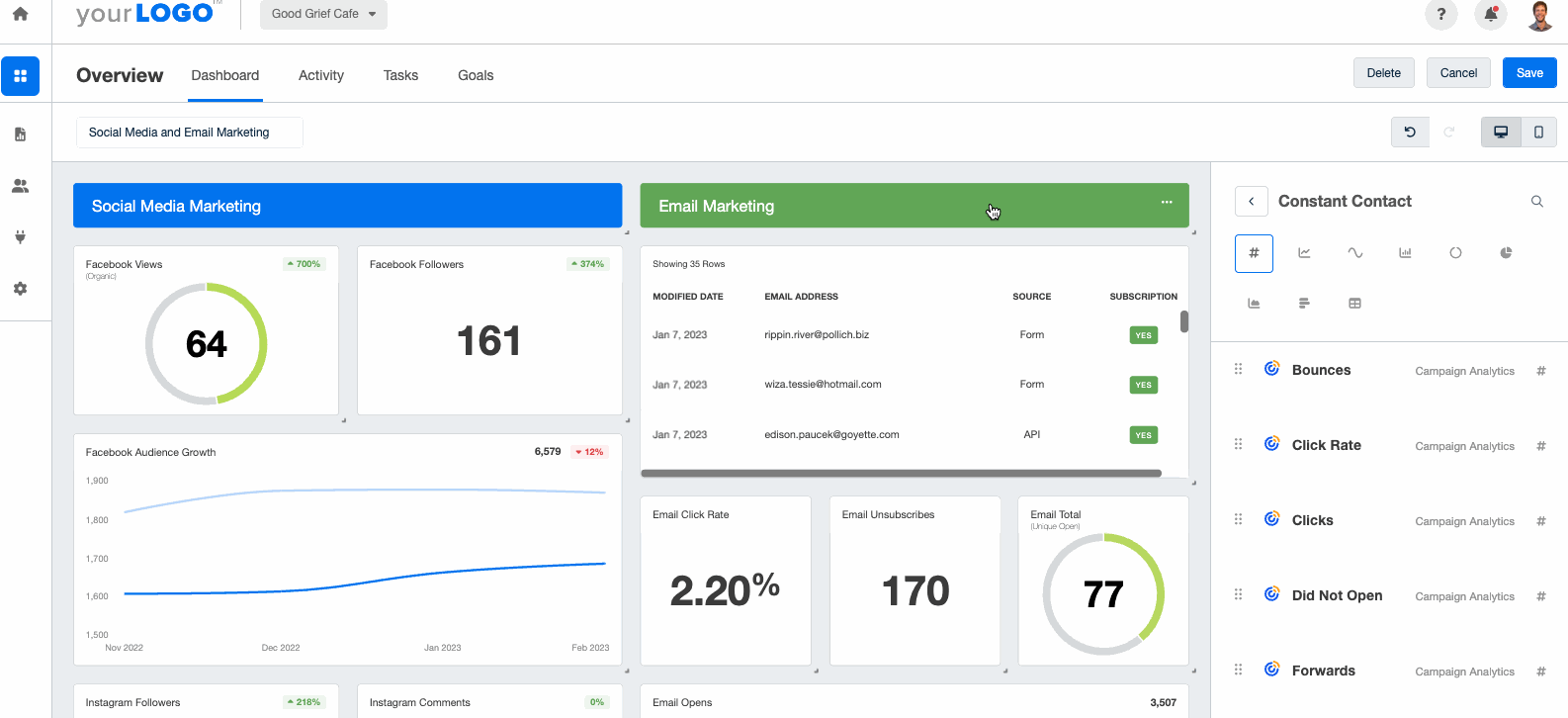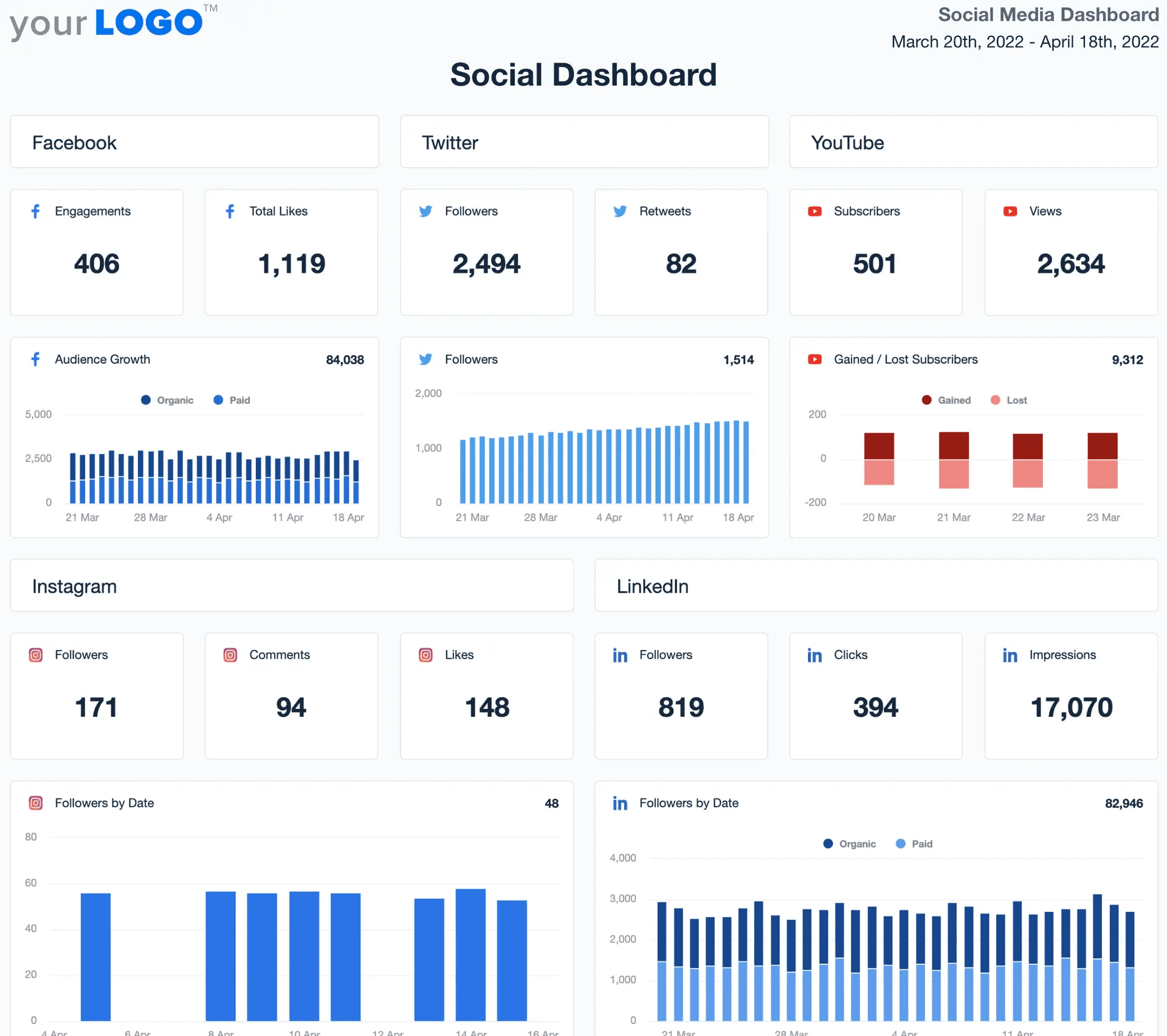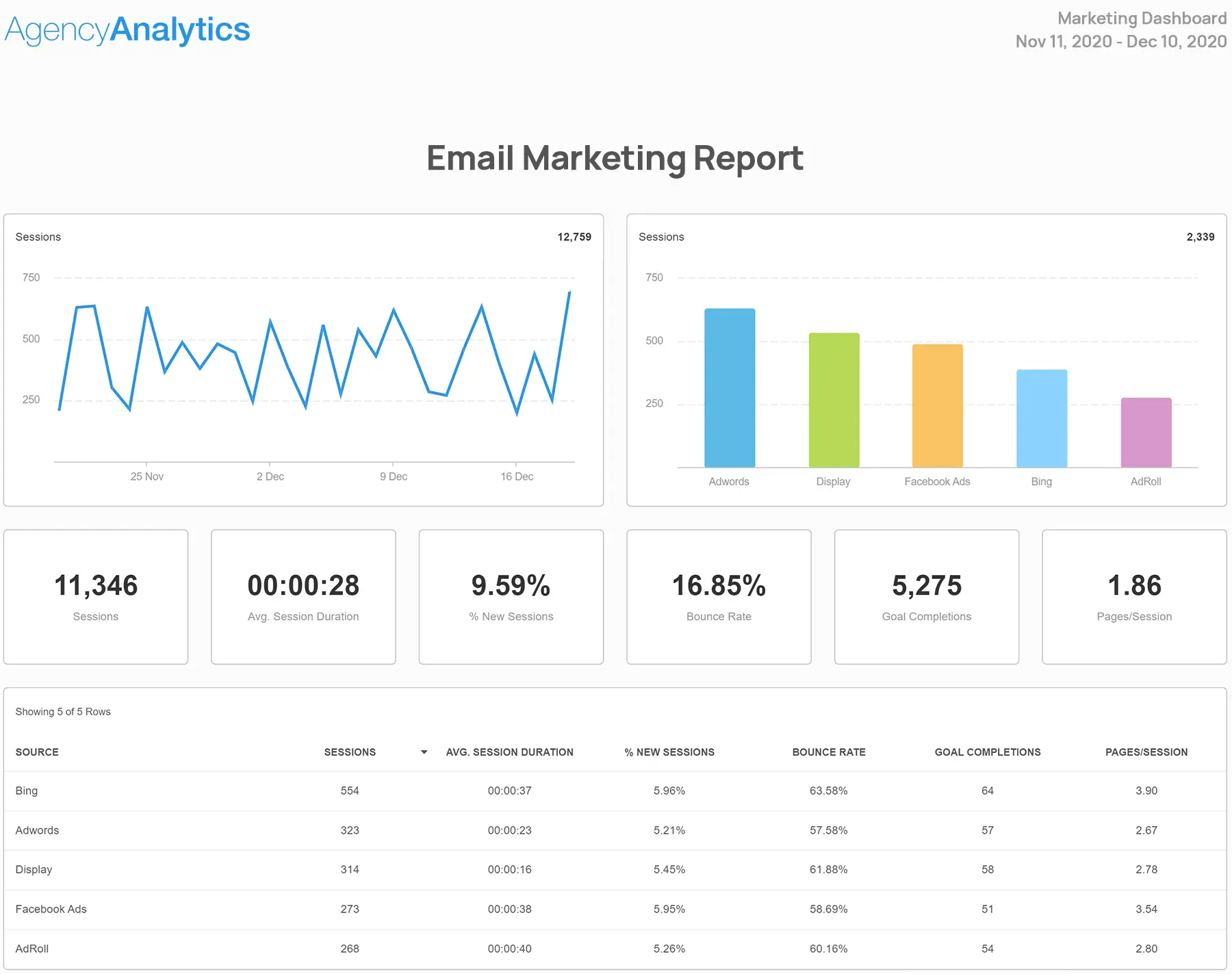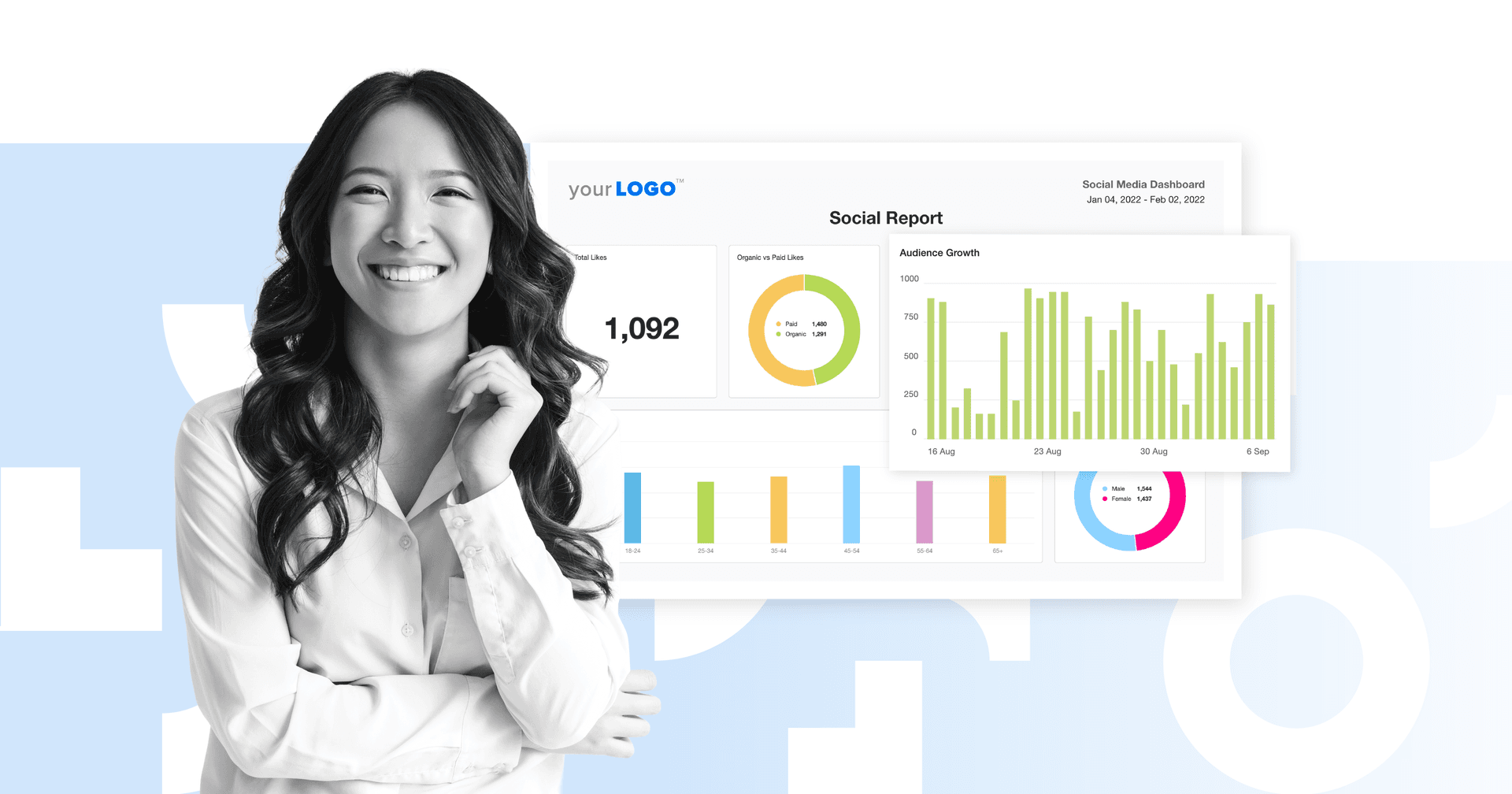Table of Contents
QUICK SUMMARY:
Social media marketing and email marketing differ fundamentally in approach and impact. Social media marketing engages audiences through diverse interactive platforms, fostering brand awareness and customer interaction. Email marketing is a more direct and personalized method that focuses on nurturing existing customer relationships. This article examines their effectiveness, offering insights for marketing agencies to allocate resources effectively and optimize client results.
The majority of agencies promote their clients' businesses through both social media and email. Both are effective and you can get great results using either one, but which is more effective overall?
If you've ever wondered whether you should spend more of your time (and clients' marketing budget) on social media or email marketing, this article is for you.
Social media has become a major fixture in the online marketing landscape. It's easy to see why—social media offers the ability to quickly reach new audiences around the world, and potentially go viral in the process.
Email marketing, on the other hand, has been around for quite a bit longer. On the surface, it may seem less exciting than social media. If your agency underestimates the power of email, however, you could be seriously missing out on opportunities for your clients. Email is still very much alive, and it's not going away anytime soon. In many ways, email can be even more effective than its social media counterparts.
Below you'll find an overview of how social media and email stack up to each other in a few key areas, including ROI, reach, and more.
What Kind of ROI Can Your Clients Expect?
First things first, as a marketing agency, you want to see an ROI for your clients' marketing efforts. In this section, we'll compare whether social media or email drives more customer engagement, click-throughs, and conversions.
In terms of overall performance, you may be surprised to find that email typically produces better results than social media. While results will differ largely based on industry, Campaign Monitor provides the following benchmarks for email marketing:
The average email open rate is between 15-25%
The average click-through rate of roughly 2.5%
The average click-to-open rate should be between 20-30%
Conversely, on Facebook, you can expect a click-through rate as low as a measly 0.07%, with the average falling around 0.9%. This makes sense, given that an email subscriber has already opted-in to your clients' list and knows about their brand.
In terms of ROI, email marketing tends to have a significantly higher return than other channels, as it's estimated that email generates $36 for every $1 spent—an astounding 3600% ROI. On the other hand, social media generates an estimated return of $2.80 for every $1 spent.
How Many People Can You Reach on Social Media?
Of course, you want to get your clients' brand message out to as many people as possible, so let's compare which channel offers a better reach.
On one hand, email has been around much longer than social media, so it naturally has a larger user base. The total number of active email users in 2023 is over 4.2 billion. By contrast, Facebook had roughly 2.96 billion monthly active users at the end of 2022.
The major catch with comparing these statistics is that you can't reach new emails that you haven't already acquired like you can with social media. If we're simply comparing organic reach on social vs. an email list, however, email tends to have a far greater reach.
The reason for this, as you probably know, has to do with social media algorithms. If you're closely monitoring your client's social media analytics, you'll quickly notice that users don't see every single post, tweet, or pin from the people and businesses they follow.
It's been known for a while now that organic reach is on a decline with social media, and it's estimated that you can only count on about 2.2% of your Facebook fan base seeing anything you post organically and could even be as low as 1.1% for some brand pages.
People also tend to check their email more frequently than they do social media. In fact, more than half of Americans (55%) check their email first thing in the morning—before looking at Facebook, doing a Google search, or even checking the weather—and 99% of email users check their inboxes at least once a day. With numbers like that, the odds that your subscribers will see your marketing emails are pretty good.

Combine your clients' most important marketing metrics using a professional monthly client report template to save time on your monthly reporting. Get started with your free 14-day trial today!
One Area Where Social Does Come Ahead
Despite these statistics, social media does have one significant advantage over email: the ability to go viral. Your clients' posts aren't restricted to their own network of followers. If someone shares their content, a certain number of their followers will see it too, which can often result in far more exposure than they'd get through email.
Using a social media reporting tool, quickly and easily monitor that growth and will see when posts help extend your message's reach. That said, going viral isn't easy to do, so it's usually better not to count on that happening.

The social media dashboard and social media report template help your agency quickly review and report on campaigns without the hassle of setting them up from scratch. Try AgencyAnalytics for free for 14 days.
How Will Your Clients' Marketing Be Received?
In general, people use social media for pleasure whereas email is geared more toward business. Depending on the industry, this distinction can give email a major edge when it comes to marketing.
It's better to treat social media as a place to connect with your client's audience rather than a place to directly push their product or service.
Facebook allows businesses to humanize themselves through the content they share. It enables them to connect with their customers on a more social level, understand more about their audiences, and most importantly, what they care about. The goal is to bring value and spark interest.
- Ellen Hedley, Co-founder of Vida Creative
With email, it's a different story. Everyone on your client's email list has already opted in to receive promotions from them, so they're less likely to get annoyed. Of course, you still have to be careful not to overwhelm their email subscribers with promotions. In general, however, people will be more receptive to marketing materials from brands they trust in their inbox than in their news feed.

The Email Marketing Report Template saves your agency's time spent on client reporting. Start your 14-day free trial today.
Security and Targeting Advice
When it comes to security, email beats social media hands down. Your clients own their email lists, meaning no one can decide to take it away from them on a whim. The same can't be said for their list of followers on social media. There's also always a small risk that a platform might shut their account down. Even if social media marketing is your agency's main strategy, you should still have an email list to fall back on.
Targeting is another major thing to consider. The better targeted your clients' marketing materials are, the more successful they'll be. With email, you can segment their list in as many ways as you want to target specific demographics.
Having the ability to segment your audience and create buyer personas can help you determine what kind of content to create for each step. It's all about moving these prospects down your sales funnel - not as quickly as possible, but as efficiently as possible. - Bryan Lozano, Vide President of Operations at Ad-Apt
Paid social media ads also offer sophisticated options for controlling who sees their promotions. Organic social media, on the other hand, has little to no targeting potential, since you don't have much control over who sees your clients' posts.
Client Reporting For Email and Social Media Marketing
Does all of this mean you shouldn't bother with social media marketing? Not at all. Email marketing might be a stronger marketing approach overall, but social media is still a great option to grow your clients' audiences and build their lists in the first place.
The bottom line is that both social media marketing and email marketing are well worth your agency's time and effort. If you had to pick one over the other simply in terms of ROI, though, email marketing is typically the better choice. Fortunately, you don't have to choose between the two. The best online marketing strategy is a diversified mix of both organic and paid ads on social while simultaneously growing your clients' email list as a long-term asset.

Written by
Joe is the co-founder and CEO of AgencyAnalytics, a marketing reporting platform used by more than 7,000 agencies. With experience creating multiple businesses, he thrives on tackling the challenges of sustainable growth and innovation.
Read more posts by Joe KindnessSee how 7,000+ marketing agencies help clients win
Free 14-day trial. No credit card required.






